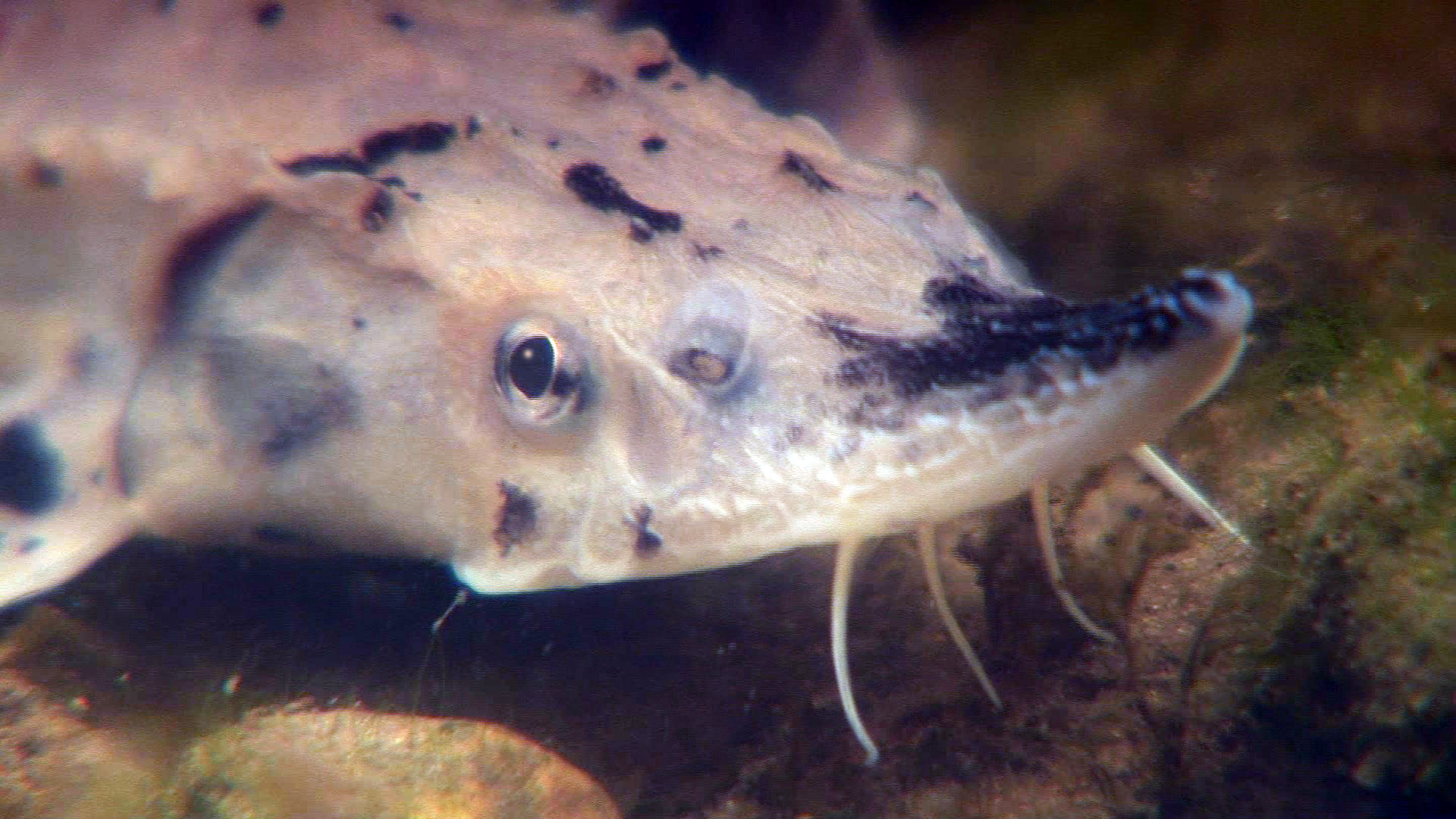
This story is the second in a four-part series looking at sturgeon restoration efforts.
Lake sturgeon restoration efforts are taking place across the Great Lakes basin.
But what that restoration looks like is entirely dependent on location and other factors, such as whether or not any lake sturgeon remain in the area.
In the few locations in the Great Lakes where lake sturgeon still spawn successfully, restoration efforts are focused on studying and managing those existing populations or boosting low populations. In the majority of the Great Lakes rivers and bays where the lake sturgeon populations have been lost, the restoration goal is to bring them back.

Manistee River sturgeon (Photo Credit: Greg Lashbrook/PolkaDot Perch)
By some rivers, streamside hatcheries are popping up. These seasonal facilities are focused on improving lake sturgeon survival rates and successful natal imprinting. Other areas are using traditional stocking methods to increase lake sturgeon numbers.
Natal river imprinting
Each spring, lake sturgeon return to their natal waters, the place where they first hatched, to spawn themselves. Like salmon, lake sturgeon can find their way back regardless of how far they travel.
To find their way back, fish imprint on their natal river. Exactly how and when lake sturgeon imprint is currently being studied.
Kim Scribner is a professor in the department of fisheries and wildlife at Michigan State University. Scribner said researchers studying salmon have found that salmonidae use an amino acid to imprint on their natal spawning grounds.
Scribner, along with Doug Larson and a researcher team at the Black River Streamside Research Facility in Onaway, Michigan, are trying to isolate exactly when and how lake sturgeon imprinting occurs.
Making sure lake sturgeon imprint on the Big Manistee River has been the focus of the Little River Band of Ottawa Indians streamside rearing facility from inception, according to Corey Jerome, the former facility manager.
In 2002, the Little River Band of Ottawa Indians launched a lake sturgeon restoration program. The Big Manistee River flows through the Tribe’s ceded territory and lake sturgeon traditionally ran the river by the thousands. The Little River Band wanted to bring the nmé, or grandfather fish, back.
Initial surveys by the LRBOI Natural Resources Department estimated the Big Manistee lake sturgeon population was down to only about 20 adults with possibly as few as three spawning females remaining.
Imprinting concerns constrained the LRBOI from simply stocking hatchery-reared fish. Their goal was to have every sturgeon properly imprint on the Big Manistee River. The Tribe also hoped to increase survival rates for the early life stages.
The first few stages of a lake sturgeon’s life are brutal. Only about 1% of spawned eggs survive to hatch. Of those, only about 1% will survive the larval stage and only about 1% will survive the larval drift to reach the nursery grounds. Only about 1% of those survivors will make it through their first summer.
The LRBOI wanted to improve those odds.
To achieve that goal, the Natural Resources Department parked a small trailer on the bank of the Big Manistee River. Water from the river was pumped into the trailer where it circulated through small tanks before flowing back out into the river.
Little River Band researchers collected fertilized lake sturgeon eggs from the river bottom and placed them in the tanks inside the new streamside facility.
The flow-thru system kept the young sturgeon in their natal water while simultaneously safeguarding them from hungry predators like bass and trout.
The streamside hatchery model has proven highly successful, and there are now nine in operation across the Great Lakes basin, including on the Milwaukee, Kalamazoo and Maumee rivers.
Between 2006 and 2011, more than 13,500 lake sturgeon were raised and stocked using streamside rearing facilities, according to the Great Lakes Fishery Trust website.
The next part in the series looks at reintroducing sturgeon to places in which they no longer spawn.
Catch more news on Great Lakes Now:
Sturgeon Restoration: Studying Michigan’s and Wisconsin’s current flourishing populations
See the Sturgeon: The many ways to see, touch and appreciate sturgeon around the region
Raising Fish: An inside look at how one hatchery is helping to restore native Great Lakes species
Featured image: Little River Band of Ottawa Indians facility for rearing lake sturgeon (Photo Credit: Greg Lashbrook/PolkaDot Perch)




